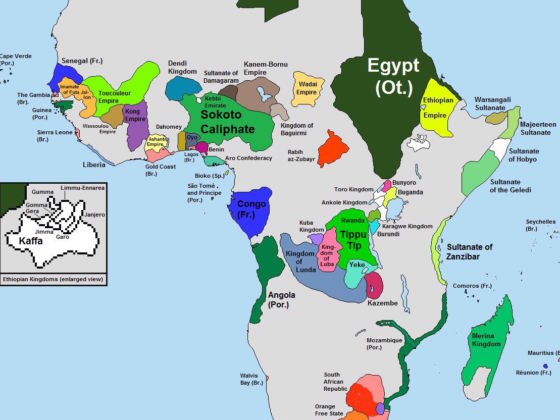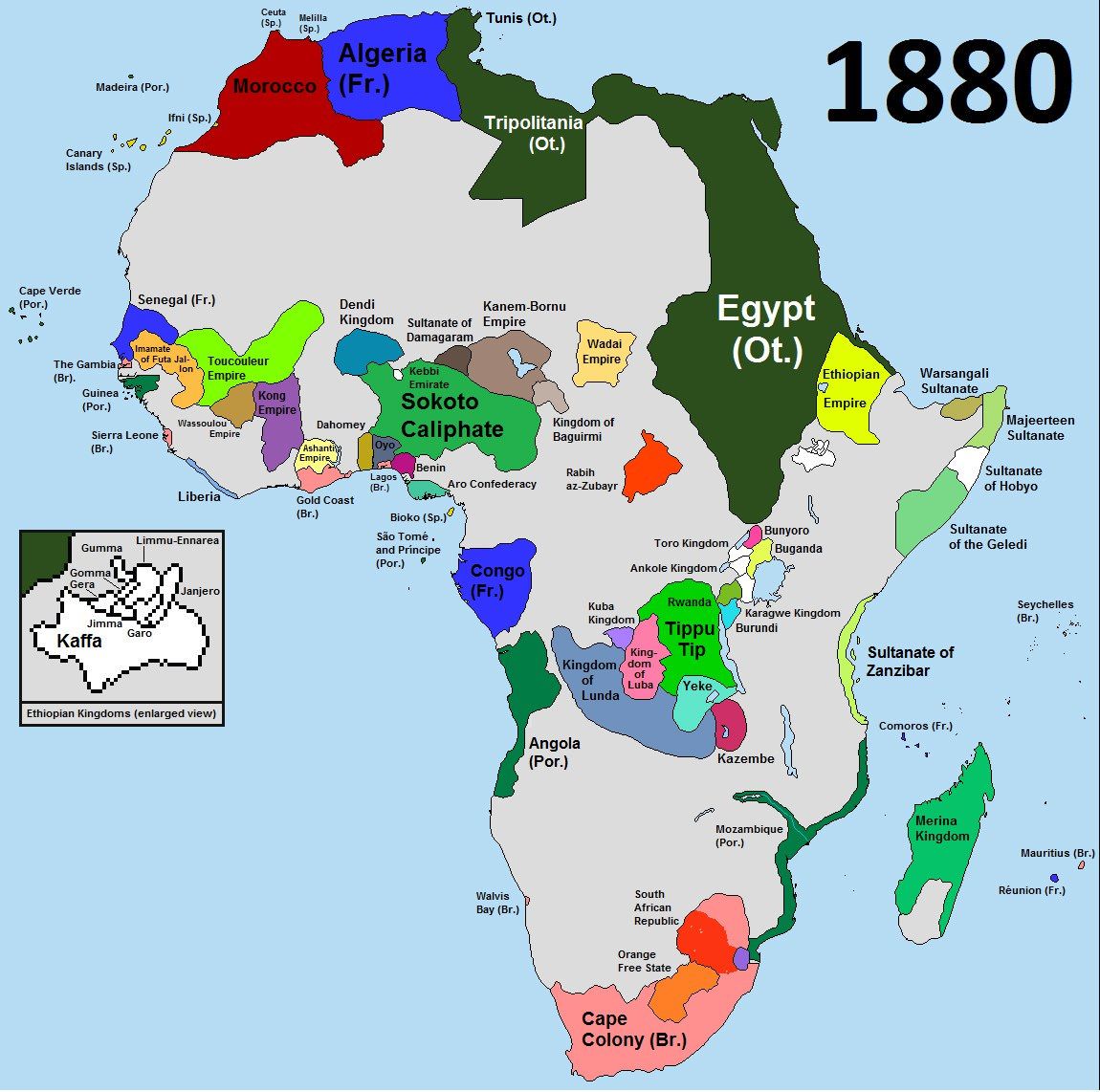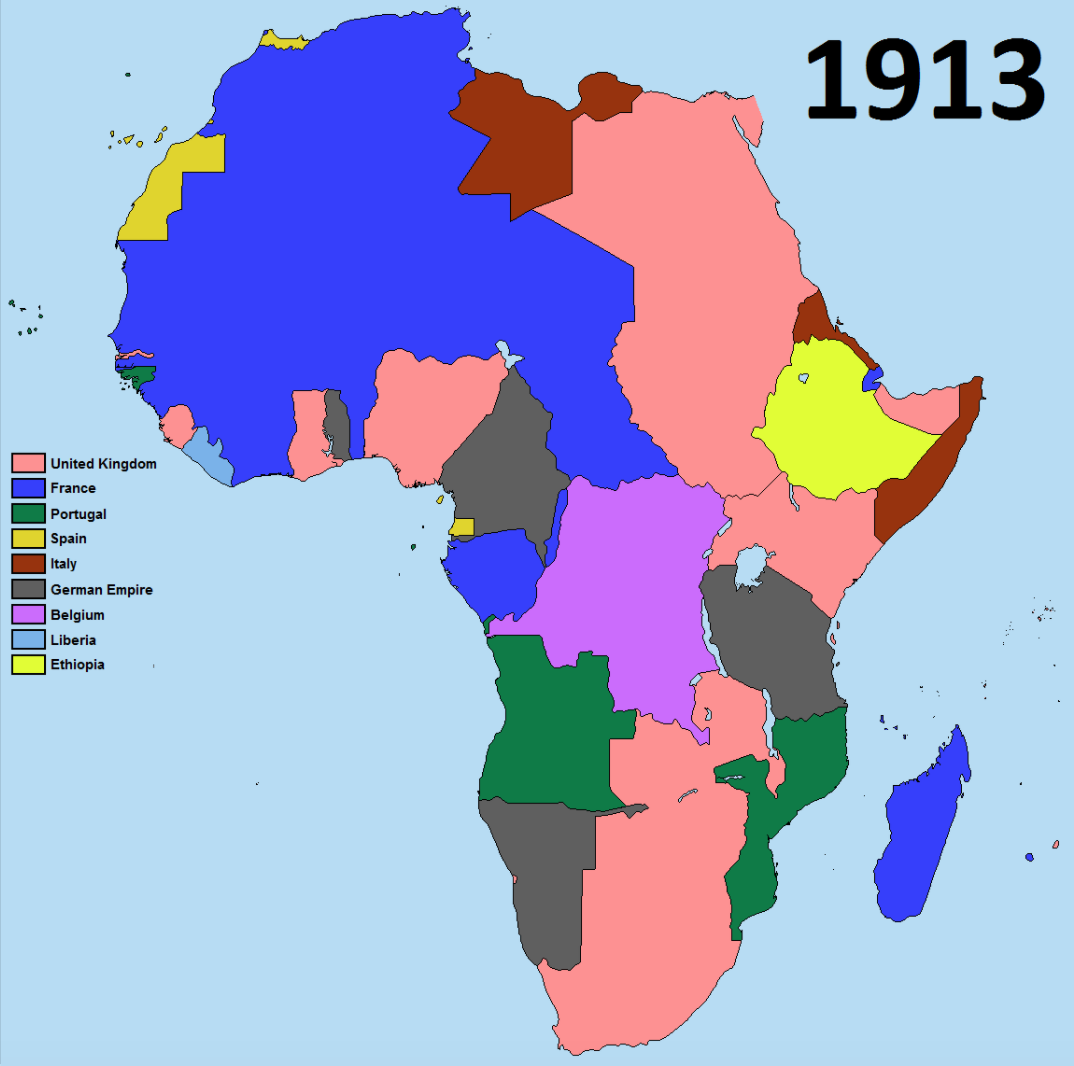In 1884, a group of European leaders and diplomats met in Berlin to carve up Africa in service of their imperial interests. While there had been colonies in parts of coastal Africa for centuries, new advances in weapon technology, trains, and a liquid defense against malaria meant that European powers could now invade the interior. Great Britain was entering the height of its colonial power, while the French 3rd Republic and Otto von Bismarck of Germany were each constructing their own new empires. What followed the Berlin Conference is known as the “Scramble for Africa.”

Mapped: Africa Before and After European Colonialism
What is often left out of Western history books are the African kingdoms, caliphates, sultanates, and empires that had, in some cases, existed for centuries. Most notable among them is the Mali Empire, which may have produced the richest man in history and covered an area about the size of western Europe. Others include the Ethiopian Empire, which, after crushing the Italian invaders in the Battle of Adwa, was the only African state to defeat a European colonial power. Save a ten-year span during World War 2, Ethiopia was governed by the Abyssinian imperial dynasty from 1270 until 1974, a period two times longer than the British Empire.
The maps below present Africa just before the Berlin Conference and the way it looked after colonization. The contrast is striking, but Ethiopia stands out as a defiant thorn in the side of European imperialism.
Africa before late-19th century colonization

Photo: ajgloe
Africa after colonization

Photo: davidjl123 / Somebody500